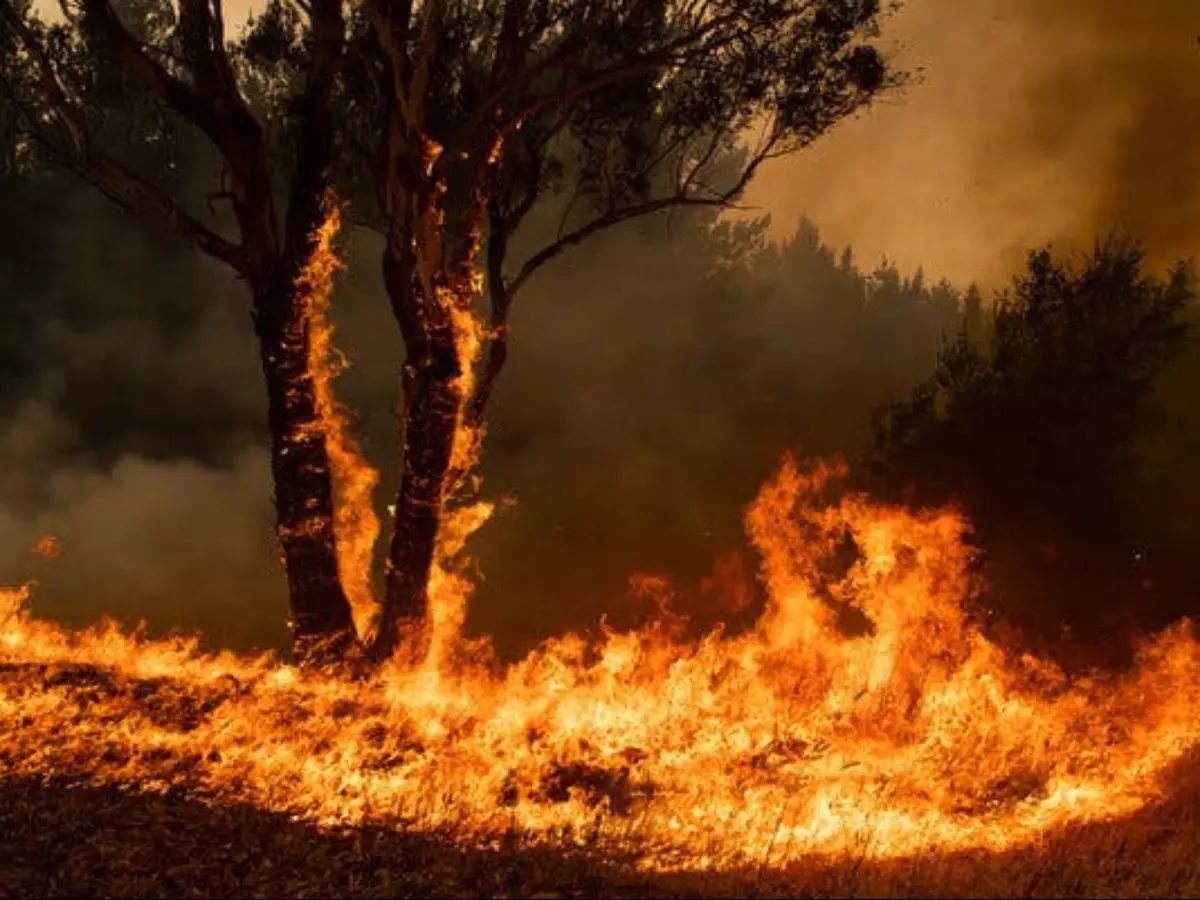Smoke From Australia Wildfires Has Now Travelled Over 14,000 Km To South America
The smoke from the massive Australian wildfires has crossed the South Pacific Ocean and was detected in parts of South America. Since September at least 179 million acres of Australian land has burned and the situation is getting progressively worse each passing day. The fires have taken a tragic toll on the population and killed at least 27 people and destroyed almost 2000 homes.

Since September, at least 17.9 million acres of Australian land has burned and the situation is getting progressively worse each passing day.
According to reports, the smoke from the massive Australian wildfires has crossed the South Pacific Ocean and was detected in parts of South America, nearly 14,484 km away.

Reuters
The fires have taken a tragic toll on the population and killed at least 27 people and destroyed almost 2,000 homes.
The blazes turned skies orange and made breathing the air in Sydney as bad as smoking a pack of cigarettes. An estimated 1 billion animals have been lost and the fires might cause permanent damage to the ecosystem.
This morning, #GOESEast spied two areas of #smoke that originated from the #AustralianBushFires. The smoke is in the process of circumnavigating the #planet.
¡ª NOAA Satellites (@NOAASatellites) January 6, 2020
Real-time imagery: https://t.co/Ahd9xNjigO#Australia #BushFireAustralia #AustralianFires #BushFires #Fires #Earth pic.twitter.com/GkDwUPQ8xy
According to reports, a satellite known as GOES-16 covers the Atlantic basin, and images clearly show smoke blowing over Chile and Argentina and into the Atlantic basin. This smoke led to hazy skies over some areas near the Chilean capital of Santiago.
"The hotter the fire, the higher the smoke plume can penetrate into the atmosphere," said Heather Holmes, assistant professor at the University of Nevada, Reno, and expert in air pollution in an interview with weather.com. "If the smoke is injected higher into the atmosphere, it will be transported farther."

Holmes also said the size of particles in plumes are important for determining how far they travel. "If you have really large ash particles, those drop out sooner. Smaller particles, including gases condensed into particles, can stay in the atmosphere longer."
wow, the #smoke from the #AustraliaFires extends for ~38 million km^2 (23 M miles^2)!!!
¡ª Santiago Gass¨® (@SanGasso) January 10, 2020
and this is just what the satellite detects (in this case NASA's OMI/OMPS detectors combined) which is sensitive only to the really dense smoke clouds, so probably the extent is much more pic.twitter.com/PyOWSMTEJe
The smoke from the bushfires pumped up thousands of feet in the air, is being fanned by the wind all the way to South Pacific which is 7,500 miles from eastern Australia to Chile and Argentina.
According to Santiago Gass¨®, a NASA aerosol researcher, the smoke covers roughly 38 million square kilometers (23 million square miles), an area the size of Russia, Canada, China, and as per his study it has also touched the Indian Ocean.
The fires are not just wreaking havoc in Australia, they also have serious consequences for people across the world. Australian authorities urged nearly a quarter of a million people to evacuate their homes and prepared military backup as soaring temperatures and erratic winds fanned bushfires across the east coast.
